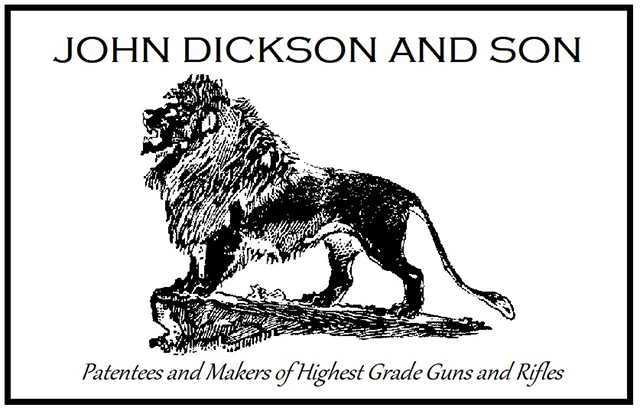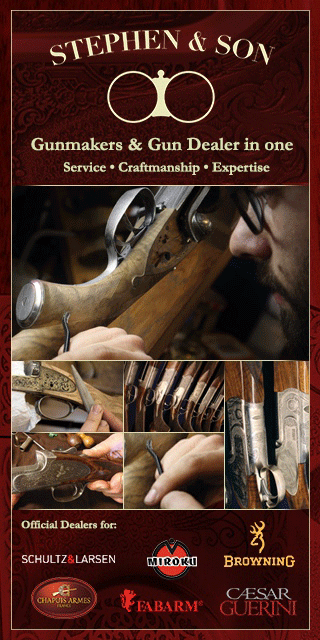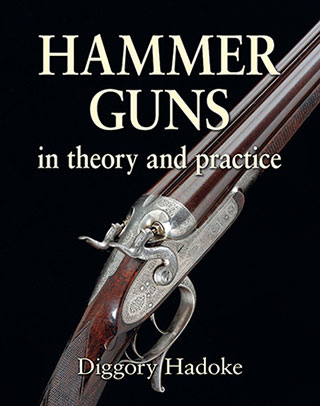Cartridges have been a staple in discussions among shooting men since the dawn of time. Well, actually since the dawn of the breech-loader, which was first offered to the British public at the Great Exhibition at Crystal Palace in 1851. The idea was a continental one and the exhibitor was Casimir LeFaucheaux.
LeFaucheaux’s gun was, of course, a pin-fire. The ‘French Crutch Gun’, as wags referred to it, was the gateway to modern sporting shotguns. It opened at the breech and allowed for a pre-loaded cartridge, containing everything necessary to fire the charge, to be inserted full and removed empty.
Whenever a new idea emerges, there will be a queue of wise-acres ready to decry it as ‘new-fangled’ and destined for failure; and so it was with breech loaders and their ammunition. The pages of The Field filled-up with letters claiming the guns were dangerous and the charges would not shoot as ‘hard’ as from a muzzle-loader.
The story of the trials to test these claims is one for another day, for here we are going to concentrate on the shotgun cartridge and how it got to be what it is today; the cheap, waterproof, reliable, effective, safe and consistent item on which we all rely to deliver success, whatever target we engage. After all; a gun, however expensive and sophisticated, is only as good as the ammunition you feed it.
Base-fire arrived in 1852; a decade too soon. It could have succeeded but for uncertain reliability; and for Charles Lancaster’s determination to control supply of the patent ammunition. In doing so he made it less attractive to other gunmakers and made ammunition hard to find. The base-fire cartridge contained shot, powder and wad in a tube sealed with a copper disc at the base. The disc had four holes punched in it, around the centre, with a smear of priming compound covering it, encapsulated by a copper head. It was a better idea than pin-fire but did not replace it.
In 1861 George Daw started selling Schneider’s patent centre-fire gun in Britain under his own name. He too, wanted to control the supply of ammunition but this time Eley Bros ignored him, made it anyway and won the ensuing court case, opening the door to anyone wanting to make centre-fire cartridges. Everyone did and, soon, pin-fire was obsolete.
Early cartridges were brass but from the mid 1870s paper cases became more common. Until the 1930s, paper-case. brass-case, and combination cartridges were widely marketed. Brass had water resisting advantages and was popular with wild-fowlers. It was also thinner-walled and offered certain benefits by requiring less of a step from chamber to bore, resulting in the ‘chamber-less gun’ concept that was influential for a while. Brass was also favoured by re-loaders, as the cases were longer-lived.
In 1903, Eley launched the paper-cased Grand Prix, which would be the benchmark for British shotgun cartridges for the next eighty years. To repel damp, paper cases were varnished. Still, convenient as they were, early twentieth century cartridges still had faults.
A cartridge extractor was an essential part of your shooting kit, in case you had to remove a stuck case, manually, in the field.
The other problem was corrosive primers. The fulminate used to generate ignition was aggressive in attacking the steel in the barrels and the breech face; with pitting the inevitable result unless the gun were cleaned carefully after every outing. This problem was not solved until the late 1950s.
Waterproofing of paper hulls was quite effective by 1895, when Eley introduced the ‘Pegamoid’ case; five layers of paper, bonded with water-resistant adhesive. Remington introduced plastic cases in the 1960s and Eley started selling a plastic-cased version of the Grand Prix in 1974. They quickly over-took paper cases in sales, offering, as they do, better waterproofing and no tendency to swell when damp.
MacDonald Hastings, writing in 1981 reflected on the downside of these new, waterproof, cartridges as; ‘currently criticised because the plastic cases have been found to be as indestructible as the flint arrow heads of our stone age ancestors. Landowners object to the detritus of expended cartridges. Currently the aim is to produce a cartridge which is weather-resistant and which will dissolve into the soil. It is probably very near’. Almost forty years later, we are still waiting for that fully-degradable plastic case!
Originally, cases were closed with an over-shot card and a rolled turnover of the paper case. This over-shot card could interfere with the shot string and intermittent ‘cartwheel’ patterns with large holes in them, were the result. With the advent of the modern crimp closure, this problem disappeared.
As the container and means of ignition improved, so too did the components inside. Black powder of different grades gave way to the new ‘smokeless’ powders during the last decade of the nineteenth century, with Schultze, E.C and other brand names jockeying for favour, at a time when most gunmakers still hand-loaded huge numbers of cartridges for their customers. Gradually, specialist ammunition manufacturers industrialised the process and took over the business entirely.
Shot was perfected as early as 1782, when William Watts developed the idea of drop-shot, which involves pouring molten lead through a sieve and allowing the drops to fall from a tower, hardening into perfect spheres as they do so. Hardness is regulated by the addition of antimony. Today, of course, we have copper-coated shot, as well as non-toxic alternatives to lead with which to contend.
Between powder and shot, the wad has changed over the years. Two thin felt wads with cork between them was used by some manufacturers, vegetable fibre, paper pulp, all kinds of materials have been tried. Typically, a pre-war wad would be of elastic, dense, greased felt, with card glued to either end.
In the mid 19th century, gunmakers experimented with different wads and shot cups to hold the shot together for longer. Greener describes a ‘Swedish Cup Wad’, for use with the, then novel, nitro powders, which had a conical base and was made of paper pulp. It protected the shot and produced tighter patterns. Some used wire cages to hold the shot together for longer in flight.
The role of the wad is to obdurate and to cushion. It must block the burning gasses sufficiently to stop them melting the shot, making it ‘ball’ and it must provide sufficient cushioning to minimise the deformation to the lower layers of shot as the shot column is forced rapidly forward. It further serves to force out the fouling in the bore from the previous shot. Eley made a marketing virtue of this with their ’Kleena’ wad, made from vegetable fibre.
While fibre wads are still favoured by many game shooters and insisted upon by many shoots, the one-piece cushioned wad and shot cup found in many high-performance cartridges is the highest point of wad development to date. Like plastic shell cases, it creates the problem of indestructibility and littering. Current efforts to produce a robust plastic wad that degrades quickly when exposed to the elements look promising and I hope we will see an end to non-degradable plastic wads in the near future.
Current efforts to produce a robust plastic wad that degrades quickly when exposed to the elements look promising and I hope we will see an end to non-degradable plastic wads in the near future.
The pressure to make cartridges shoot farther and hit harder has been with ammunition makers forever. It is interesting to see the modern fad for super-fast muzzle velocities in the light of the experiments carried out by Burrard and others. Greener, Burrard and Purdey all concluded that driving the load very fast did not achieve any real benefit down-range.
In fact, long-range shooting with larger shot is most effectively achieved by using low-velocity loads, generating momentum, which is maintained down-range without blowing the pattern. A muzzle-velocity of 1,320 fps was generally thought best, now there seems to be a fad for cartridges which achieve over 1,450fps. I wonder if it will pass.
Finally, there is the matter of cost. In the 1930s, Midland Gun Co. sold the ‘Demon Waterproof’ cartridge for sixteen shillings per hundred. Holland & Holland sold a hundred best, brass-lined, ‘Royal’ cartridges for twenty-one shillings. A new ‘Royal’ hammerless ejector was then £120.
Just put that into perspective: a new best gun cost one hundred and twenty times the cost of one hundred cartridges. Translate that into modern terms. Today, a ‘Royal’ costs £120,000. Can you name a brand of cartridge that costs £1,000 per hundred? Neither can I. Think about that next time the chap in the gun bus, sitting next to you, starts moaning about the cost of ammunition.
The comparison is not quite fair, as the cost of best guns has increased enormously out of proportion to everything else. However, even using standard indexing criteria, 21 shillings in 1935 amounts to £70 per hundred cartridges today; or £700 per thousand, which is still more than twice what we pay. If we relate the price to average earnings, those cartridges would cost you £1,900 per thousand now. The fact is, however you look at it, ammunition has never been better and it has never been cheaper.
Published by Vintage Guns Ltd on



